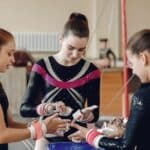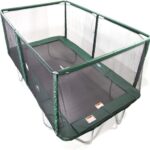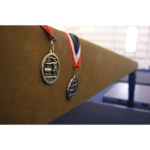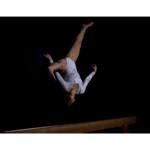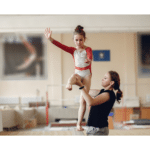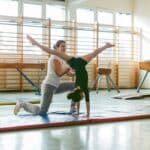
What do gymnasts wear on their feet? It’s nothing at all as they usually perform barefoot! It’s not just about style—it’s a fusion of function and finesse that can make or break a performance.
Dive into the world of barefoot gymnastics to discover the secrets behind those seemingly effortless leaps and landings.
Table of Contents
- Why Are Gymnasts Barefoot?
- Gymnastics shoes
- Gymnastics Socks
- Trampoline shoes
- Rhythmic Gymnastics Shoes
- Conclusion
- FAQs
Why Are Gymnasts Barefoot?
Gymnastics is unusual compared to most sports because gymnasts usually compete barefoot. Shoes restrict the natural movement of the foot especially the ability to point toes which is a key movement for gymnasts.
Being barefoot indoors is not a problem and the extra grip and stability that bare feet provide are essential.
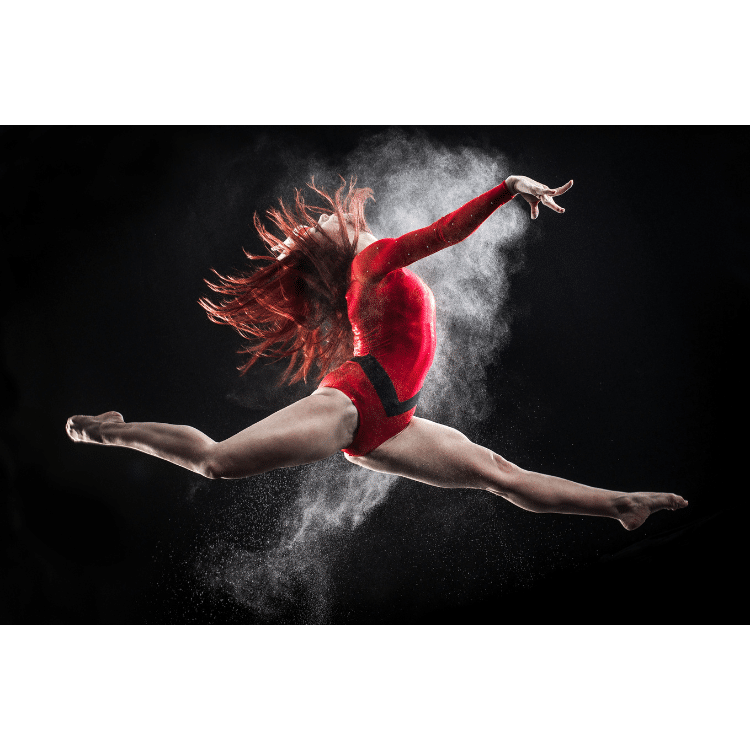
The flat bottom surface of regular shoes might provide extra comfort when running or landing but the rigid surface won’t allow gymnasts to perform skills as efficiently.
The added weight affects the ability to flip, rotate or even hold advanced body shapes like Planche.
Gymnasts also like to feel the equipment they are using with their feet. Gymnastics equipment is made from surfaces such as carpet (floor exercise), suede (balance beam) and soft landing mats all of which are comfortable to land on barefoot.
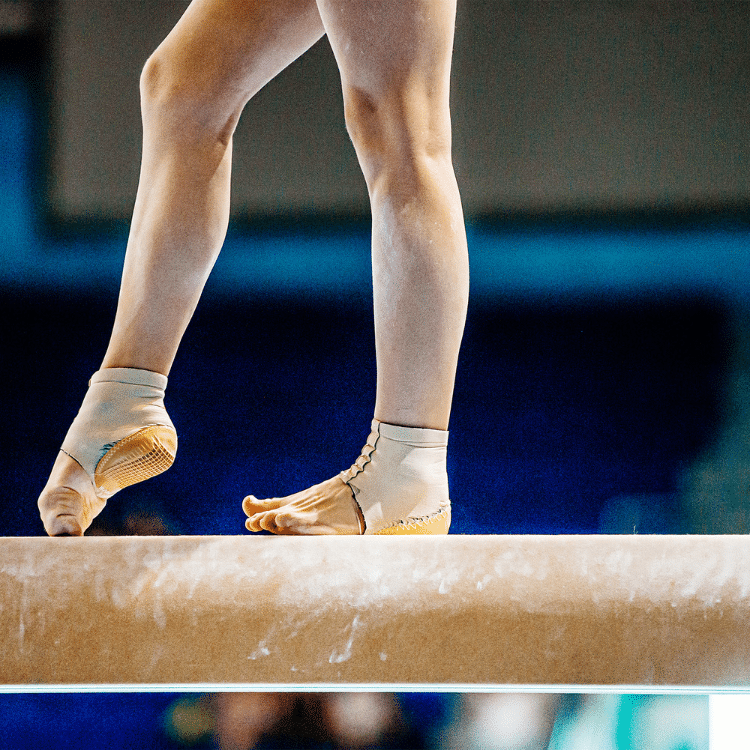
Regular shoes are not permitted to be worn at all by the FIG because as well as the negative impact on performance, judges mark scores based on whether they can see a gymnast point their toes or not. This is part of the execution score taken on each skill.
In addition to this, regular shoes will damage the expensive equipment used at competitions.
Gymnastics shoes
However, there are some specialist types of shoes that gymnasts can wear if they want to. These types of shoes are tight fitting to gymnasts’ feet allowing them full extension and flexion of the foot.

The benefit of wearing gymnastics shoes is that they can stop feet from slipping due to sweat. They are also more hygenic than walking around gyms barefoot all of the time. Some gymnasts will wear socks underneath their gymnastics shoes as well.
It is tough to find good quality gymnastics shoes, but my favorites are sold by Milano. These are ideal for Artistic gymnasts and Tumblers but also have a version specifically for Trampoline gymnasts.
I wear them to coach as they have more grip than just wearing socks and in our facility, we don’t wear outdoor shoes when coaching.

Gymnastics Socks
Gymnasts are allowed to wear socks if they so wish and they are more commonly seen than in previous years. The benefit of wearing socks is that they reduce the friction between the foot and the surface of the floor or apparatus.
In certain situations, less friction has great advantages but at other times it will almost certainly lead to disaster!
When performing a spin (think balance beam routine) less friction will help a gymnast spin more before they stop. This can lead to higher difficulty scores as the greater the amount of spin, the greater the difficulty tariff.

On the other hand, when performing complex tumbling passes (think floor exercise) the reduction in friction will increase the chance of a slip on take off or landing.
Trampoline shoes
Trampoline gymnasts wear socks or shoes to prevent their toes from getting caught in the holes of trampoline beds. A professional trampoline bed is different from those usually found at home as the bed is not solid and a toe getting caught in the bed will cause an injury or loss of balance.
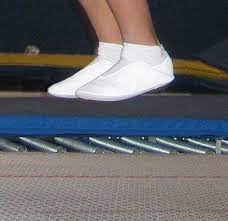
Specialist trampoline shoes are very similar in design and style to artistic shoes. They are tight fitting with no solid bottom, allowing the trampolinist to point and flex their feet freely.
Rhythmic Gymnastics Shoes
Rhythmic gymnastics shoes tend to cover less of the foot. Only the toes tend to be covered as Rhythmic gymnasts spin and turn more on their toes compared to artistic gymnasts.
Rhythmic gymnasts don’t perform complex tumbles and are instead focused more on the dance elements and making their routines flow.

Conclusion
Although the majority of gymnasts do compete barefoot, there are times when specialist shoes or even socks have an advantage.
If you are thinking of buying a pair of gymnastics shoes beware of cheap options as they will often lack the tightness that more expensive versions offer.
You also need to ensure they are not too rigid at the bottom as this will stop the feet from pointing when needed.
Happy training!
FAQs
Do you wear shoes in gymnastics?
Most gymnasts don’t wear shoes and perform barefoot instead. Regular shoes are restrictive and heavy so impact a gymnast’s performance.
Are gymnasts allowed to wear socks?
Gymnasts aren’t allowed to wear socks as they slip on the floor surface and apparatus. Socks can be worn on trampolines or underneath specialist gymnastics shoes.
What are gymnast shoes called?
They are simply called gymnastics shoes.
Are gymnasts barefoot or socks?
Gymnasts are usually barefoot as this allows full range of motion in the feet and are less slippery than socks.
- A Complete Guide to Gymnastics RipsAre you tired of dealing with painful gymnastics rips on your hands from training? Look no further – this article offers a comprehensive approach to… Read more: A Complete Guide to Gymnastics Rips
- The 12 Types of Trampoline (explained)Trampolines, a staple of joy and fitness, cater to all ages, inspiring kids and adults alike to leap out of their indoor routines into a… Read more: The 12 Types of Trampoline (explained)
- How is Gymnastics Scored? (answered)In the world of gymnastics, every flip, spin, and leap is a blend of athleticism, precision, and artistry. But how is gymnastics scored accurately and… Read more: How is Gymnastics Scored? (answered)
- Level 5 Gymnastics Skills (Guide)This guide delves deep into the Level 5 gymnastics skills, providing insights, breakdowns, and an expert perspective on each skill and its significance in a… Read more: Level 5 Gymnastics Skills (Guide)
- Level 4 Gymnastics Skills (Guide)In this comprehensive guide, we’ll delve into the details of the Level 4 gymnastics skills, breaking down each requirement for a clear understanding. Whether you’re… Read more: Level 4 Gymnastics Skills (Guide)
- Level 3 Gymnastics SkillsLevel 3 is defined as a development level by USAG meaning not all clubs or gymnasts will compete these skills at a competition. This article… Read more: Level 3 Gymnastics Skills

